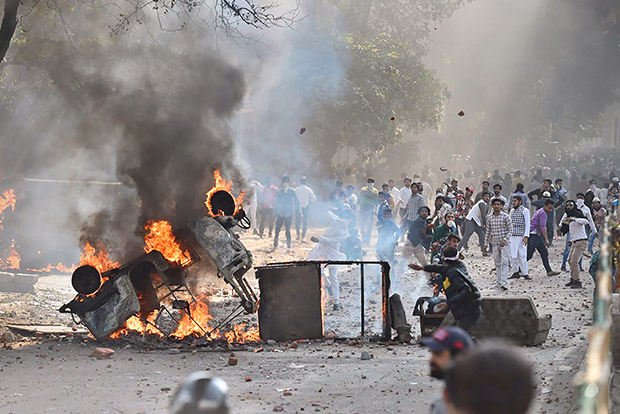Begin typing your search...
Scourge of violence-inciting fake news tough to tackle
Messages warning of renewed mob violence hit social media recently as New Delhi reeled from the worst violence it has seen in over a decade, with riots that left at least 50 people dead and 300 injured.

Chennai
Police went to the sites of reported conflict to conduct their own investigations and temporarily shut down multiple Delhi metro stations following the reports of street clashes and people shouting in trains.
“It was a long night, and we did everything possible to ensure there were no flare-ups based on this false information,” said Delhi Police spokesman MS Randhawa.
The perpetuation of such rumours through social media is not a new phenomenon in India, and, over the past decade, India has seen multiple violent incidents triggered by online posts. In 2012, during what became known as the “Northeastern exodus,” thousands of people hailing from northeastern India boarded trains from Bengaluru in southern India to Guwahati, following posts suggesting violent attacks on northeastern migrants.
In 2013, the Muzaffarnagar riots in the northern state of Uttar Pradesh, which left over 60 dead and thousands displaced, were triggered by a fake video circulating on social media, which was rumoured to depict a Muslim mob brutally murdering a Hindu youth. The video, however, had been produced in a Gulf country.
In 2017, India also saw a wave of mob attacks and lynching of innocent people spurred by online accusations of child abductions. At that time, people deemed to be “outsiders” were targeted by large mobs accusing them of kidnapping children, after warnings circulated on WhatsApp. “Technology offers new, lightning-fast paths on which rumours can travel. It lends new meaning to the old phrase ‘A lie can travel halfway around the world, while the truth is putting its shoes on,’” said Chinmayi Arun, the founder of the Center for Communication Governance at Delhi’s National Law University.
Political parties have not taken much action to mitigate the violence, he added. “There is no political will to crack down. There are provisions within the Information Technology Act to come down heavily on and punish those who spread rumours and misinformation with the intention to create trouble,” cybersecurity expert Pavan Duggal told DW.
Reacting to criticism that it hasn’t done enough, the Delhi government has started advertising measures targeting fake news, hate-mongering and inflammatory messages shared on WhatsApp and other social media platforms. Chief Minister Arvind Kejriwal also formed the new Committee on Peace and Harmony, which will work with a fact-checking body to check the authenticity of content. Additionally, social media platforms have not taken any major step to combat the issue, according to the Poynter Institute for Media Studies, a non-profit journalism school that specialises in fake news research.
Cyber expert Duggal believes that the solution can be found in the example that other countries have set forth. “We have to be like Singapore,” Duggal said. Singapore was one of the first countries to implement laws that would effectively make producing misinformation illegal. Under the law, people who post false information with “malicious intent” face hefty fines.
The writer is a journalist with Deutsche Welle
Visit news.dtnext.in to explore our interactive epaper!
Download the DT Next app for more exciting features!
Click here for iOS
Click here for Android
Next Story



